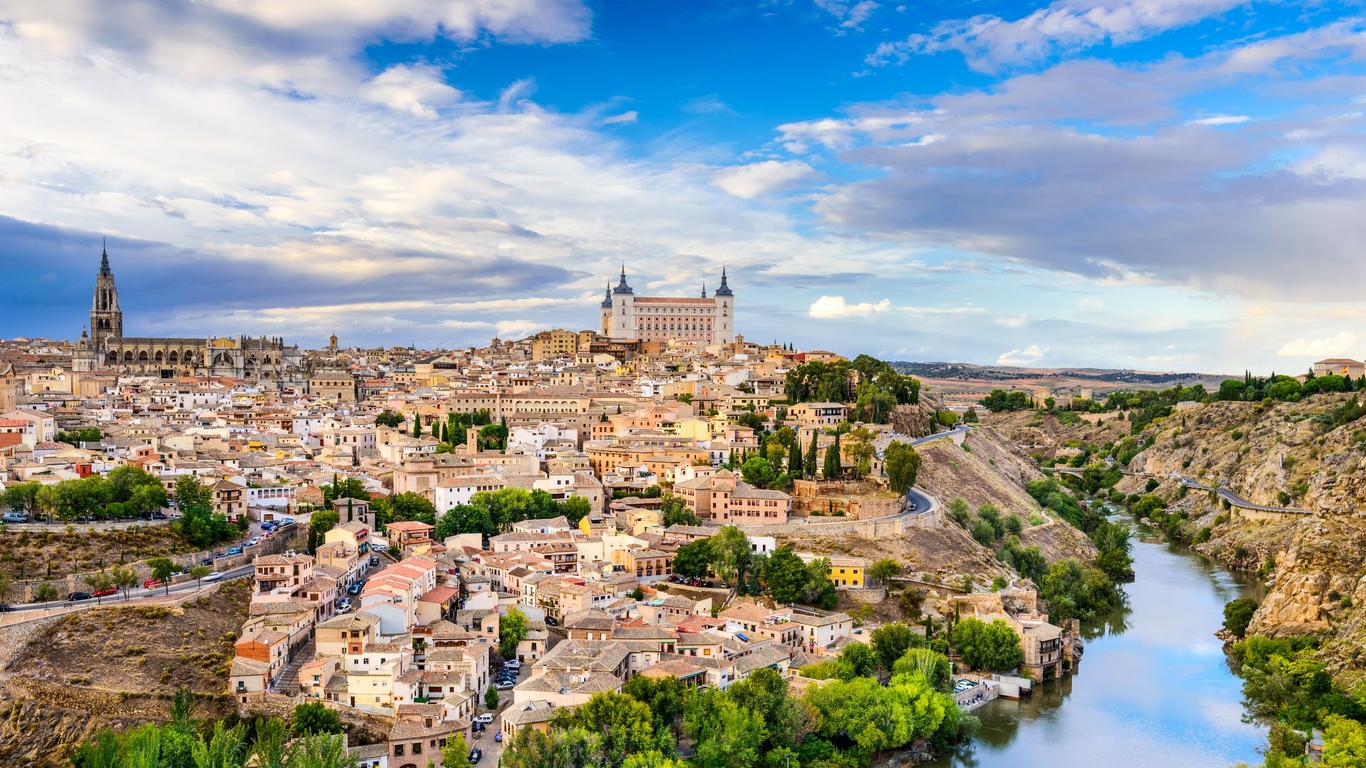Dubbed the “City of Three Cultures” due to its presence of Christian, Arab and Jewish residents, the ancient city of Toledo clusters on a hill above the plains of Castilla-La Mancha. Its historic walled centre is like an open-air museum, packed with churches, fortresses, mosques and synagogues that reflect diverse architectural styles and seeing it designated a UNESCO World Heritage Site.
The Plaza de Zocodover is the heart of historic Toledo and a lively meeting place flanked by elegant buildings, and from here narrow streets radiate, lined with architecture that reflects the city’s religious tolerance throughout the centuries. Of particular note are the synagogues of Santa María la Blanca and El Tránsito, with the latter home to a magnificent coffered ceiling and richly adorned walls, while one of the city most impressive buildings is the 10th century Mosque of Cristo de la Luz with its Romanesque-Mudejar sanctuary. The churches of San Sebastián and Santa Eulalia illustrate the richly-adorned architectural style of the Mozarabs, while the Santiago del Arrabal was built on the site of an old mosque, with towers that resemble minarets. Toledo’s most famous resident is undoubtedly El Greco, with a collection of his most outstanding works on display in the museum at his former house. Art lovers shouldn’t miss a visit to the Cathedral, as it is not only considered a high point of Gothic art, but also contains an impressive collection of works by Goya, Lucas Jordán and Van Dyck.
From Madrid, it’s just 30 minutes by high-speed train to get to Toledo, or there are designated bus services that will pick visitors up directly from a hotel for day trips into the historic city. The narrow, winding streets of Toledo are best explored on foot, with at least a half day needed to soak up the sights.
Although a settlement has existed at Toledo since the Bronze Age, it was Alfonso VI who created laws in the early-11th century that allowed for the coexistence of Christian Castilians, Mozarabs and Jews. While the city served as the capital of the Spanish Empire from the 6th century, it largely fell into decline after it was moved to Madrid in 1561.





